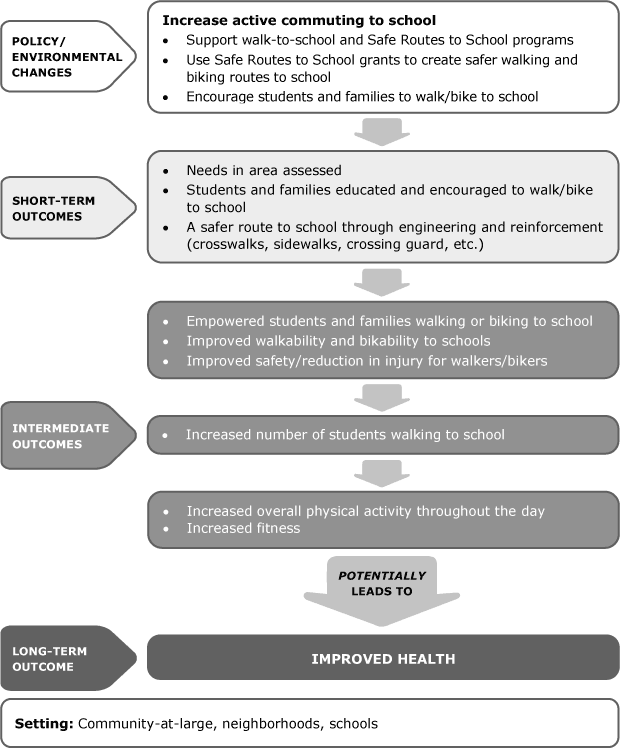Our Healthier Communities
Our Healthier Communities Initiatives are built on the concept that local communities can work together to give all community members healthy choices and support the pursuit of healthy lifestyles. More than 160 Ys are working in collaboration with community leaders to make changes in policies and the physical surroundings in those communities so that healthy living is within reach for individuals of all ages and backgrounds.
Increase Active Commuting to School
Active commuting promotes higher levels of overall physical activity and fitness as well as enhanced long-term health. Policies to create a safe route to school increase students' walking or biking to school.
Policies to create a safe route to school increase students walking or biking to school. Efforts to educate and encourage students and parents to walk/bike to school and to reduce barriers to walking/biking to school through engineering and enforcement have shown increases in active commuting to school. Furthermore, students who walked/biked to school had higher levels of overall physical activity and fitness than students who did not commute actively to school. Supporting programs that encourage active commuting is an effective strategy to increase physical activity and thus potentially enhance long-term health.
References
- Alexander, L.M., Inchley, J., Todd, J., Currie, D., Cooper, A.R., & Currie, C. (2005). The broader impact of walking to school among adolescents: Seven-day accelerometry based study. BMG, 331, 1061–1062.
- Cooper, A.R., Wedderkopp, N., Wang, H., Andersen, L.B., Froberg, K., & Page, A.S. (2006). Active travel to school and cardiovascular fitness in Danish children and adolescents. Medicine & Science in Sports & Exercise, 38(10):1724–17316.
- Eyler, A., Brownson, R., Doescher, M., Evenson, K.R., Fesperman, C.E., Litt, J.S., Pluto, D., & Schmid, T.L. (2008). Policies related to active transport to and from school: A multisite case study. Health Education Research, 23(6), 963–975.
- Mendoza, J., Levinger, D., & Johnston, B. (2009). Pilot evaluation of a walking school bus program in a low-income, urban community. BMC Public Health, 9, 122.
- Metcalf, B., Voss, L., Jeffery, A., Perkins, J., & Wilkin, T. (2004). Physical activity cost of the school run: Impact on schoolchildren of being driven to school. BMJ, 329, 832–3.
- Saksvig, B.I., Catellier, D.J., Pfeiffer, K., Schmitz, K.H., Conway, T., Going, S., Ward, D., & Treuth, M.S. (2007). Travel by walking before and after school and physical activity among adolescent girls. Archives of Pediatrics and Adolescent Medicine, 161(2), 153–158.
- Staunton, C.E., Hubsmith, D., & Kallins, W. (2003). Promoting safe walking and biking to school: The Marin County success story. American Journal of Public Health, 93(9), 1431–1434.
- The Freiker Project, Boulder, Colorado. (n.d.). From Play Matters: A study of best practices to inform local policy and process in support of children's play. Washington, D.C. http://kaboom.org/docs/documents/pdf/playmatters/Play_Matters_Extended_Case_Studies.pdf. Retrieved November 15, 2010.
- U.S. Centers for Disease Control and Prevention. (2005). Barriers to children walking to or from school-United States 2004. Morbidity and Mortality Weekly Report, 54(38), 949–952. http://www.cdc.gov/mmwr/preview/mmwrhtml/mm5438a2.htm.
